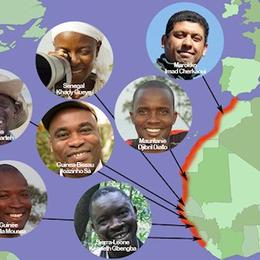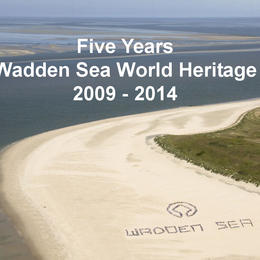
Wadden Sea World Heritage
The Wadden Sea is the largest unbroken system of tidal flats and intertidal sands in the world, where natural processes run undisturbed throughout the area. It spans 500 km along the coastline of three countries – Denmark, Germany and the Netherlands - and has an overall area of 14,000 km².
In 2009, the Dutch-German Wadden Sea was inscribed into the UNESCO World Heritage List in recognition of the ‘Outstanding Universal Value’ of the area and the progress made in protecting and managing it for more than 30 years. In 2014, the site was extended to include the Danish part of the Wadden Sea. The UNESCO World Heritage status is the highest possible award for a natural site and recognises and acknowledges its outstanding global importance. Thus, the Wadden Sea is now ranked as highly as other World Heritage properties, for example, the Great Barrier Reef and the Grand Canyon.
Conditions for the status of World Heritage are that the area is complete and intact and that conservation and management are effectively secured . Both hold true for the Wadden Sea: It comprises all facets of species, habitats and processes that constitute a natural and dynamic system. And over 30 years of joint nature protection efforts by Denmark, Germany and the Netherlands have resulted in an excellent conservation state which ensures that the area is preserved for the benefit of present and future generations.
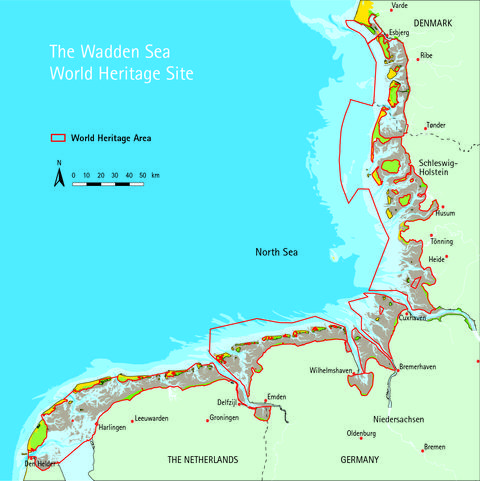
World Heritage Map
- Nowhere else on the planet is there such a diverse and dynamic coastline on this scale, continuously shaped by wind and tides. These natural processes create islands, sandbanks, channels, mud flats, gullies, saltmarshes and dunes that you can experience today.
- Natural forces and dynamics provide an invaluable record of past and ongoing dynamic adaptation of plants, animals and their coastal environments to climate change. The productivity of biomass is the highest in the world and offers wide food availability for fish, seals and birds.
- Biodiversity on a worldwide scale is reliant on the Wadden Sea, which sustains over 10,000 species of plants and animals and is crucial for 10-12 million migratory birds that make a stopover in the area on their journey between their wintering and summering grounds.
- The Wadden Sea includes all the facets (species, habitats and processes) that make up a natural and dynamic ecosystem within an area large enough to ensure that these properties are maintained and protected.
- The Wadden Sea’s excellent conservation state is a result of over 30 years of joint nature protection efforts by Denmark, Germany and The Netherlands, where the Wadden Sea has been designated as national parks and nature reserves. The protection of one inseparable ecosystem is a joint responsibility for the world community and for the benefit of present and future generations.
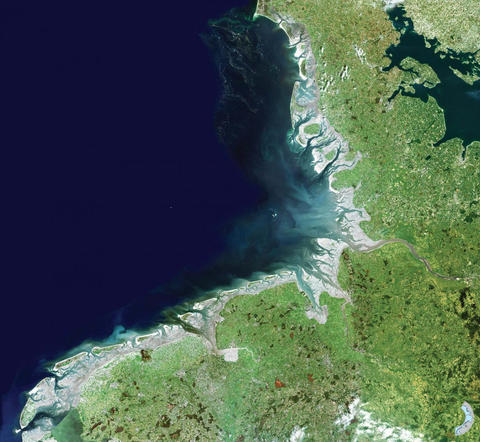
Landsat images of the Wadden Sea at low tide (Copyright Common Wadden Sea Secretariat)
Unique worldwide
There are many other sedimentary coasts that, in one way or another, resemble the Wadden Sea morphologically but are much smaller or differ in terms of climate, river influence, tides or waves. Other large tidal flats can be found in the Arctic, but there the tides tend to be smaller than in the Wadden Sea, and the shore is frozen and covered by ice for most of the year. In tropical and subtropical climates, the tidal zone is often occupied by mangroves, whereas in the Wadden Sea tidal flats lack upright growing plants, except for salt marsh vegetation above mean high-tide level. On other coasts, most of the sediment is directly supplied from the hinterland by rivers, and salinity is usually low or variable. Examples of such coasts are the Arctic Lena Delta, the temperate Mississippi Delta or tropical deltaic regions of the Amazon, Niger or Ganges.
The Wadden Sea is special in that almost all of the sediments are supplied from the adjacent sea with only a minor or local river influence. Salinity ranges mostly between 20 and 30 psu, which is less than in the open ocean (34) but more than in estuaries (0-20), where most other intertidal flats are found in Europe. Large sand and mud flats occur along the NW African coast where the Banc d’Arguin (Mauritania) covers an area of 630 km², which corresponds to 13% of the tidal flat area of the Wadden Sea. These tidal flats constitute a relic from a former river delta, and are closely linked to the Wadden Sea by wading birds overwintering there. The Wadden Sea comprises about 60% of the intertidal area at the northeastern Atlantic shores.
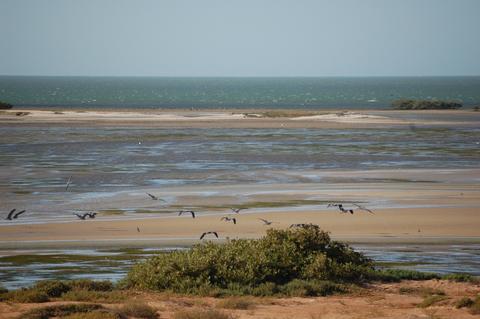
Banc d'Arguin, Mauretania (Photo: Gerold Lüerssen).
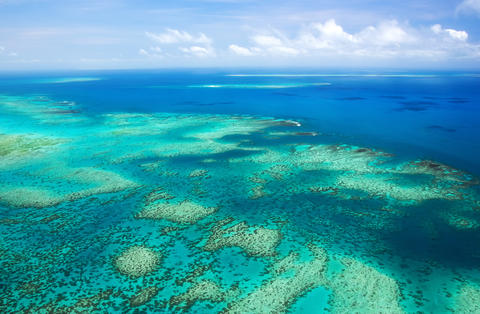
The Great Barrier Reef (photo: Martin Maun/Shutterstock.com)
